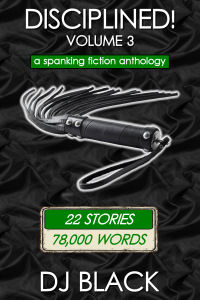A Medieval Caution

domestic chastisement from the high middle ages as found in a church

spanking the wife while the rest of the family gets on with business
My girl is reading a book on the history of sex and punishment, she was hoping for more spanking subjects, but it is actually grim reading.
Motivated by her interest, a quick search found a vanilla blog about church decor.
If you are British you will know that there are hundreds of medieval churches in the country and many of them have ornate wooden carved gates and inside, pews with biblical or sometimes pagan scenes.
Flagellation is a common theme but usually the person punished is male. This is sometimes true even if a marital flogging or spanking is depicted.
Having actually studied this at college. The reason for these scenes is comedic satire. They are often subversive images that depict the exact opposite of what was usual, in other words it was the woman who was spanked.
It hard to think that this inversion was just for fun and some people think they were coded messages commenting on the orthodoxy of religious practice (nothing to do with spanking your wife which was de rigour and not controversial).
However many more were just cautionary illustrations like the one above that depicts a naked woman being switched by a fully clothed woman (a mistress or mother figure). This one is either to be found in Boston (the original town in England) or in Germany as both I gather have such depictions but from the text it wasn’t clear which one was shown.
There is some suggestion that the relative rarity of traditional marital spanking depictions in churches was because it had an ambiguous erotic dimension. While some poo-poo this, dismissing the medieval mind of being too innocent, it is true that engravings in books, which often proved to be the source of some of these carvings, (as in one from the 17th century depicted above) were much more likely to show a woman getting a spanking from her husband. So why weren’t these engravings on public display if one could show nudity as above?
The male-on-female flagellation scenes seem to be more common in Germany and the Netherlands, which might account for it and chimes with the picture above if German sourced. However it might just be that the more salacious images were kept out of sight and were the province of those that could read.
All this has to be put in context of course as many images were just the fancy of a local engraver who often secreted them away where only certain people would look. So the depictions and subject matter would vary from place to place.
This brings us back to the subversive hidden meanings on which we can only ponder.
Filed under: art, articles, censorship, discussion, domestic, F/F, history, humour, Religion, web round-up | 6 Comments
Tags: church, churches, marital spanking, middle ages, spanking, switching, wood carving







This is a fascinating article. Thanks for posting.I’m very interested in spanking during the Middle Ages
Thanks Rich -see below. 🙂
I have some doubts about the interpretation of the first photo. But will deal with the other first.
But not much about the second, obviously an erotic image that has probably nothing to do with medieval age as you can determine from the horse carriage, the large windows, the semi-naked female plumpy body, the dress and… the books given to student girls. Sorry, not much medieval… (but would appreciate the source)
Then, I think one should be careful about bias when trying to interpret representation of corporal punishments, particularly in religious context and historical context. It is more likely that we don’t know much about the meaning of them, particularly as they were done under strong religious censorship. But we do have some knowledge !
During the medieval age, the “liberal arts” studied in “schools/monasteries” were represented by feminine figures (see wiki for the full detailed representation). Therefore, what you see in the first picture might be an allegory of a student being “corrected” by the “Grammar”, the birch being a common attribute of that art. This looks more like a stick but a stick was also the representation of authority. Overall this is more symbolic than a real correction. The master was always a male and most of the students too ! This is in a church ? not a problem : churches were often also monateries. So one has to be careful… this is more likely to be a studend/master representation than domestic punishment. (oups… sorry again)
The second engraving is not medieval (I described as from a later period in my text) I have amended that to 17th century – although it could be slightly earlier as the windows and the coach would not be out of place at Hampton Court of that time.
I agree that it might not be domestic – but a school for girls seems equally unlikely for this time. My point (not clearly made sorry) is that it is of a similar style to Dutch engravings of that kind.
As for the first being an allegorical image – well for sure – I doubt if anyone posed for it. 😉 And I think I was arguing that it was highly symbolic as you say. Symbolic of what is hard to say.
Actually I think you are right and I am sloppy here – because I think it matters if this is German or English and I do not know.
Your mini-article and critique is wonderful – thanks for being so involved. But on a final note I have warned people before about my cod-history pieces. Would you really buy a history text from a purveyor of spanking erotica? 😉 The truth is I don’t have time to do the research for this kind of thing to be any more than TV light.
If I find out more I will come back. 🙂
Very interesting post!
More info here:

It looks more like a woman on my large picture – but if it is a man then this is usual as I said in my article. This link says it is dutch not German or English – which is also discussed in my article.